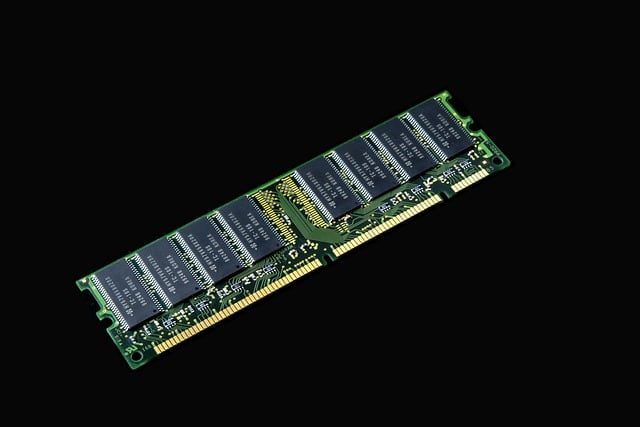When your laptop's battery performance starts to wane, indicating signs such as shorter usage times, longer charging durations, and unexpected shutdowns, it's time to consider a replacement laptop battery. It's crucial to act proactively to prevent data loss and maintain device efficiency. Opt for an authentic replacement to ensure peak efficiency and longevity. Regularly check your laptop's built-in health indicators to monitor battery status. Aging batteries naturally lose their capacity to store energy, so keeping an eye on these indicators is vital. When you decide on a new battery, verify its compatibility with your device model, compare customer feedback for reliability, and consider the battery's capacity, brand reputation, warranty duration, and cost. Always back up your data before installation. The replacement process involves disconnecting your laptop, removing screws, carefully inserting the new battery as per manufacturer guidelines, ensuring proper alignment of cables, and securing all components without causing damage or strain. Post-installation, calibrate your battery by completely depleting and then fully recharging it under similar conditions to help the laptop accurately gauge remaining charge. Adjust power settings for energy conservation, avoid using the laptop while plugged in excessively, and maintain a moderate temperature to preserve battery health. By following these maintenance practices, your replacement laptop battery can provide extended performance and reliability.
When the longevity of your laptop’s original battery wanes, a replacement laptop battery becomes a pivotal upgrade. This guide elucidates the lifecycle of laptop batteries and pinpoints the moment to procure a new one. You’ll learn to identify telltale signs that signal your current battery’s decline. Next, we navigate the market to find the ideal replacement, considering compatibility and quality. With step-by-step instructions, even novices can safely install their new battery, ensuring optimal performance. Finally, discover practical tips for preserving your laptop’s fresh power source, extending its lifespan and maintaining efficiency.
- Understanding the Lifecycle of Laptop Batteries: When to Consider a Replacement
- Signs That Indicate Your Laptop Battery Needs Replacing
- The Process of Purchasing a New Replacement Laptop Battery
- Step-by-Step Guide on Safely Installing a Replacement Laptop Battery
- Post-Installation: Tips for Maintaining Your New Replacement Laptop Battery's Health and Performance
Understanding the Lifecycle of Laptop Batteries: When to Consider a Replacement

Laptop batteries have a finite lifecycle, with typical usage leading to a gradual reduction in their capacity to hold a charge over time. To understand when it’s time to consider a replacement laptop battery, one must be aware of several factors that influence battery health. A lithium-ion battery’s performance deteriorates as it ages and undergoes countless charge-discharge cycles. This degradation can manifest in various ways, such as shorter battery life, longer charging times, or the inability to maintain a full charge. Monitoring your laptop’s battery status through its built-in health indicators is crucial. If you notice that your device no longer holds a charge for as long as it once did, or if it frequently shuts down under normal loads, these are clear indications that a replacement may be imminent. Proactively replacing your laptop battery can prevent data loss due to unexpected power failures and ensure consistent performance. It’s advisable to source a genuine replacement laptop battery to maintain optimal efficiency and longevity of your device. Regularly calibrating your battery and avoiding extreme temperatures can also extend its life, but eventually, every battery reaches the end of its useful lifecycle. When this happens, investing in a new battery is not just a matter of convenience; it’s essential for maintaining the full functionality of your laptop.
Signs That Indicate Your Laptop Battery Needs Replacing

When your laptop’s performance starts to falter, it might be a sign that your battery is reaching the end of its lifespan. A reliable power source is crucial for optimal laptop functionality, and there are several indicators that signal when a replacement laptop battery is necessary. If you notice that your device is no longer holding a charge as well as it used to, or if it’s requiring frequent recharging, this could be an early sign of battery degradation. Another common issue is the laptop shutting down unexpectedly when the charge reaches a certain level, which often indicates that the battery capacity has diminished significantly. Additionally, if your laptop is showing a battery health indicator in the settings that reports a low percentage or poor condition, it’s a clear sign that a new battery would be beneficial. Over time, batteries naturally lose their ability to store and supply energy efficiently. Therefore, monitoring these signs will help you determine when it’s the right time to invest in a replacement laptop battery to maintain your device’s performance and reliability.
The Process of Purchasing a New Replacement Laptop Battery

When your laptop’s battery performance begins to wane, it’s often time to consider a replacement laptop battery. This process involves several key steps to ensure you obtain a compatible and reliable unit for your device. Initially, assess your laptop model to determine the correct battery specifications. Manufacturers typically provide this information on their official websites or within the laptop’s documentation. Once you have the exact model and size, you can proceed to locate a reputable vendor. Online marketplaces are a convenient choice for a wide selection of replacement laptop batteries, offering various brands and price points. Always verify the seller’s credibility through customer reviews and ratings before making a purchase.
Upon selecting a vendor, compare the available battery options based on their capacity, brand reputation, warranty period, and cost. A higher milliampere-hour (mAh) rating generally indicates a longer battery life, but it should be balanced with your laptop’s power requirements to avoid over or under-battery scenarios. After making your choice, the battery can be purchased and delivered directly to your doorstep in most cases. Ensure that you back up all necessary data before proceeding with the battery replacement to prevent any potential loss. Follow the manufacturer’s instructions for replacing the old battery with the new one, which usually involves disconnecting your laptop from the power source, removing a few screws, and carefully placing the new battery in its designated slot. Proper installation is crucial for both the longevity of the new battery and the safety of your device.
Step-by-Step Guide on Safely Installing a Replacement Laptop Battery

When your laptop’s battery performance begins to wane, it may be time for a replacement. A degraded battery can lead to unexpected shutdowns and reduced runtime, affecting your productivity and workflow. To ensure optimal performance and longevity of your device, installing a new battery is often the best solution. Here’s a step-by-step guide on safely installing a replacement laptop battery.
Before you begin, make sure to power down your laptop completely and disconnect it from any charging sources. This step is crucial to prevent any electrical hazards during the installation process. Next, remove any external devices connected to your laptop and lay it flat on a clean, dry surface to avoid any potential damage from spills or dust. Locate the battery compartment, which is typically found by removing screws on the bottom of the laptop. Carefully open the compartment without applying excessive force that could damage other components.
Once you have access to the battery, take note of how it is connected and disconnect the battery cables, noting their positions for reassembly. Remove the old battery, being gentle to avoid static electricity that could harm both the battery and your laptop. With the battery removed, clean the contacts with a soft, dry cloth to ensure good connection once the new battery is installed.
Proceed to place the new replacement laptop battery in its designated slot, ensuring it fits snugly without any loose parts that could cause short-circuiting. Reconnect the battery cables, making sure they are securely attached to their respective terminals, matching the original positions you noted earlier. Once everything is back in place, reassemble the battery compartment, tightening the screws evenly to avoid any imbalance that could strain the battery or other components.
After securing the compartment, power on your laptop and check if the new battery is recognized by the system and holds a charge as expected. If everything appears to be functioning correctly, you’ve successfully installed your replacement laptop battery. Always refer to your device’s manual for specific instructions and safety precautions tailored to your particular model. Regularly replacing your laptop battery with a high-quality unit can help maintain its performance and extend its lifespan.
Post-Installation: Tips for Maintaining Your New Replacement Laptop Battery's Health and Performance

Once your new replacement laptop battery is installed, maintaining its health and performance is crucial to prolong its lifespan and ensure optimal operation. Firstly, adjust your laptop’s power settings to balance between energy efficiency and performance based on your usage patterns. Regularly calibrate your battery by discharging it completely while monitoring the charge level, then recharge it fully under similar conditions. This process helps the laptop accurately report remaining battery life.
Additionally, avoid using your laptop when it’s plugged in frequently, as this can strain the battery and reduce its capacity over time. Keep your laptop at a moderate temperature to prevent performance issues; both extreme heat and cold can negatively impact battery health. It’s also advisable to close applications that are not in use to conserve energy. By following these maintenance tips, you can preserve the integrity of your replacement laptop battery and avoid premature wear, ensuring it serves you well for years to come. Regular check-ups and adherence to these practices will keep your battery functioning at its best.
When a laptop battery shows signs of fatigue, such as reduced charge duration or an increased number of recharges without reaching full capacity, it’s time to consider a replacement. This guide has outlined the critical stages for assessing your laptop’s battery health and making an informed decision about when to invest in a new replacement laptop battery. By following the clear steps provided, from recognizing the need for a change to the safe and effective installation of the new battery, you can ensure your device retains peak performance and longevity. Remember to adhere to the maintenance tips after installation to optimize the lifespan of your replacement battery. With this knowledge, your laptop can continue to serve as a reliable tool for all your needs without the inconvenience of premature power failure.
